A Picture’s Worth – With Michelle Robinson
A Picture’s Worth… is where we ask mobile photographers that have taken or made, as the case may be, powerful mobile art to explain the processes they took. This includes their initial thoughts as to what they wanted to create, why they wanted to create it, how they created it, including all apps used and what they wanted to convey. We also ask these incredible artists to explain their emotions and how the image projects those feelings. We have published a few A Picture’s Worth articles recently, if you have missed those – please go here.
In this A Picture’s Worth today Michelle Robinson discusses creating a cohesive set of images and the processes involved. Over to you Michelle …(foreword by Joanne Carter).
If you would like to contribute to this section or if you have seen an image that you would like to learn more about, just email [email protected] and we will get it all set up).
The Idea

‘Mad World 1 (All around me are familiar faces, worn out places, worn out faces) – ©Michelle Robinson
I’ve been meaning to do more cohesive sets of images in a long time. With that, I mean images that visually, belong together.
The best of my ‘ideas’ seem to come when I am under the deepest emotional strain. Often it is part of the process of emotional release via creativity as I search to find the answers within myself.
I was in Melbourne, a far busier city than Adelaide. All these people rushing here, there and everywhere in the ordered chaos that is a city. It seemed to reflect how my brain felt at the time: I was trying to sort through the chaos.

‘Mad World 2 (Bright and early for their daily races, going nowhere) – ©Michelle Robinson
When I returned to Adelaide I had a ton of street photos – but there were some that didn’t say enough, and I don’t like wasting photos especially mobile photos as so much can be done with them, either for collaging or a montage. I’d been wanting to do a series of images to either poems or song lyrics as part of my journey to being more cohesive visually. Normally I will either attach quotes or sometimes I will write about my image and the emotions associated with it. But the words come after the image. This time, I wanted it to be the other way around.
“A Mad World” by Tears for Fears came to mind because of the lyrics. I’d returned from Melbourne having taken so many street photos of people on their mobile phones – it’s such a drastic change from a handful of years ago before smartphones came on the market. What struck me was how expressionless everyone is today, caught up in their own worlds: how connected and disconnected we all are – so this led to a small series of images called “Portraits of Souls Lost” where I used Decim8 to distort and disfigure street portraits that I had taken. That was the base of the idea, which led to me thinking about how these lost souls exist in this Mad World – a mad world where we are more connected to someone on another computer or smartphone than we are to the person next to us walking on the street. And I wanted to reflect that ‘maddening’ concept. A sense of chaos, madness, rushing, distortion, a sense of unreality.
The Process

‘Mad World 3 (Their tears are fillin’ up their glasses, no expression’ – ©Michelle Robinson
I selected about 5 or 6 images from the batch I had. All my base images are taken with Procamera (unless it is a Slow Shutter image).
After selecting the images, I cropped them all to 1:1 in Snapseed and as with most app’d photos, I will bring every pixel I can to the forefront by using the Drama filter and the Details tool. All the images were put into Diptic so that I can save them at 2596 x 2596 – the bigger, the better as far as I am concerned. Unfortunately I do this at a price as Diptic doesn’t save my Exif data. (If you want your Exif data to be saved, make sure you use apps that do that. There are quite a few, I have discovered that don’t do that; however there are apps available where you can fill in lost Exif data – I have only used one but deleted it because it wasn’t saving the image large enough for me). I also used Photofx Ultra and the wide angle lens to distort the images – some slightly and some a lot.
In a couple of the images I used the Modern Grunge App. I selected the textures and grunge settings I wanted, particularly the colour and set it as a pre-set; the same with the textures and colours for the “cut” function. After that I edited the images in Snapseed again to saturate the red a bit more. I used Camera Awesome because I know they have a red frame. After that I put the images in Photoforge 2 for the Vintage 3D function that they have to get the blue and red stripes and a more ‘jerky’ look to the images. After that in Snapseed again to make adjustments.
For the crowd images, pretty much the same process was used except a certain BW filter in Photofx Ultra was used. The Vintage 3D effect from Photoforge 2 was used twice on these images because I wanted a more ‘frenzied’ look to them.
And then in one image I used the Symmetry app and the rest of the processes were the same.
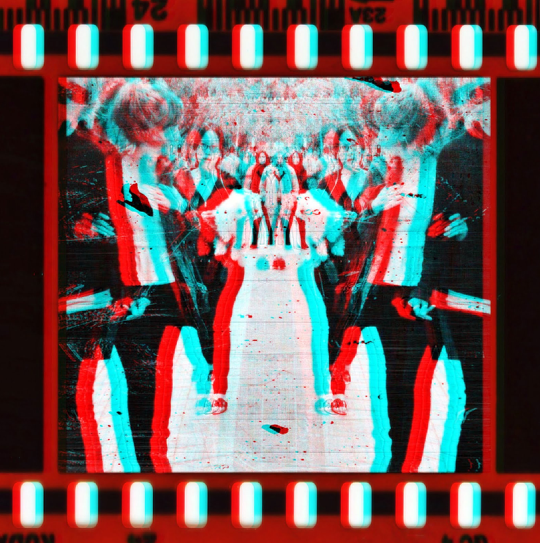
‘Mad World 4 (Hello teacher, what’s my lesson? Look right through me) – ©Michelle Robinson
JC – Michelle, I would like you to explain your emotions and feelings before, during and after the process and what the final image means to you and how you intend it to be interpreted by others.
As mentioned above, my state of mind before doing this set was a bit frazzled. I had gone to Melbourne to clear my head, for a change of scenery and to get lost in the crowd so to speak. The busy streets of Melbourne reflected how I felt, and it resulted in a series of images that a) questioned my idea of existence, reality, identity – who are we, really?; b) our increasing disconnect from the world around us and the increased connectivity we have to people online halfway around the world. At the same time, I had been questioning as well the mad and furious pace in which we all share photographs these days. I’d just learnt that 1 billion photographs were uploaded to Facebook in the last year alone.
Whilst mobile photography is changing our visual landscape, I feel the speed of it makes everything look like a blur. I felt this tightening in my brain that I wanted to release to escape from this blur. For me, I release it through creativity and thus why mobile photography is so fun.
At this stage of the thought process, the visuals are fairly clear in my head after the image selections are done. I would say I know my apps pretty well, so I know which ones I want to use before I start. I tend to experiment with one app at a time, putting it through it’s paces and seeing how it performs with about 8 other apps open. Often times I will only determine how good the effects are only when I view the apps on my desk top. Time has taught me that what looks good on an optimised mobile device screen does not always translate well onto a large screen.
As I begin the process, I usually have my headphones on – there is nothing to distract me and the choice of music often dictates what I am app-ing as well. If I can recall, I had some pretty heavy Minimalism playing by Bonzai Worx or Shonky. It sounds weird, but I then go into a zone. Going into this zone means that I am lost in what I call App-Mode. Everything falls away. Whatever I was feeling emotionally is about to get released into the tweaking, layering and blending (when necessary) of each image. This complete focus has led me to now have issues with my left eyeball (true!) – I have to exercise it – it’s from staring at an iPhone screen too much! I now edit on my iPad 2 (I guess you could consider this a health warning to those of us who love doing heavy edits on an iPhone!).
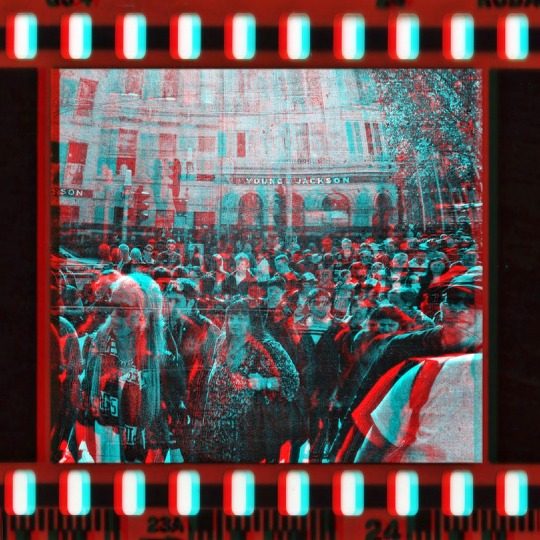
‘Mad World 5 (I find it hard to take when people run in circles. It’s a very, very mad world’ – ©Michelle Robinson
These images were not difficult to do, so they probably took about two hours in total. The bulk of which is taken by the first image in making decisions like how light, dark, how much texture etc. After the initial workflow is determined, the rest are pretty quick.
At the end of the process, I tend to feel ‘empty’. Just simply relaxed. Art as therapy! It truly is. For me, the ability as humans to be creative in this manner is so important: to be able to identify an emotion and just create something, anything to express it. You gain a sense of accomplishment and satisfaction at the end, you have healed yourself or given yourself reprieve, you have cleared your head and all without too much cost or at anyone’s expense.
So, like many of my more ‘arty’ mobile photos, there is usually an underlying emotion or intention to them that is not immediately obvious or evident to anyone. For me, this particular set marks my forward journey in a new type of photographic art that I love and support. It is the first time where the visual result is most cohesive. And I got to express myself as well. I used to think that I was all ‘arty’ in my ‘randomness’ – really it was just a fashionable and rather shallow way to say that I am ‘eccentric’. The randomness, as I have discovered comes from the vast expanse of the type of images I make, and they are more likely I feel, to be considered ‘unpredictable’ than ‘random’. I find that I have learnt far more in being more focused in the way I express myself.
As far as interpretation is concerned, I am not ‘precious’ about it. I have learnt that the moment an image is shared publicly, the public owns the interpretation. If it coincides with mine, great. If not, it is a new point-of-view which often is really fascinating. Often times, people will see things that I would not have noticed myself. Having said this, the stage on which we all play doesn’t really allow for too much contemplative thought. I imagine the scroll-like tempo is a nice staccato unless there is an image that stops a person in their tracks. I own only my own interpretation, and the source of the creativity: my mind and my soul. After it is shared, it is a free-for-all.
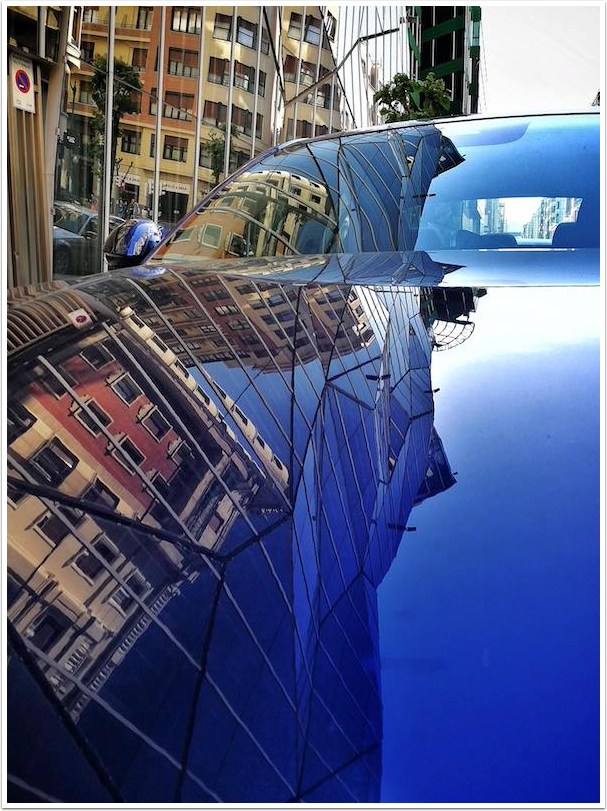
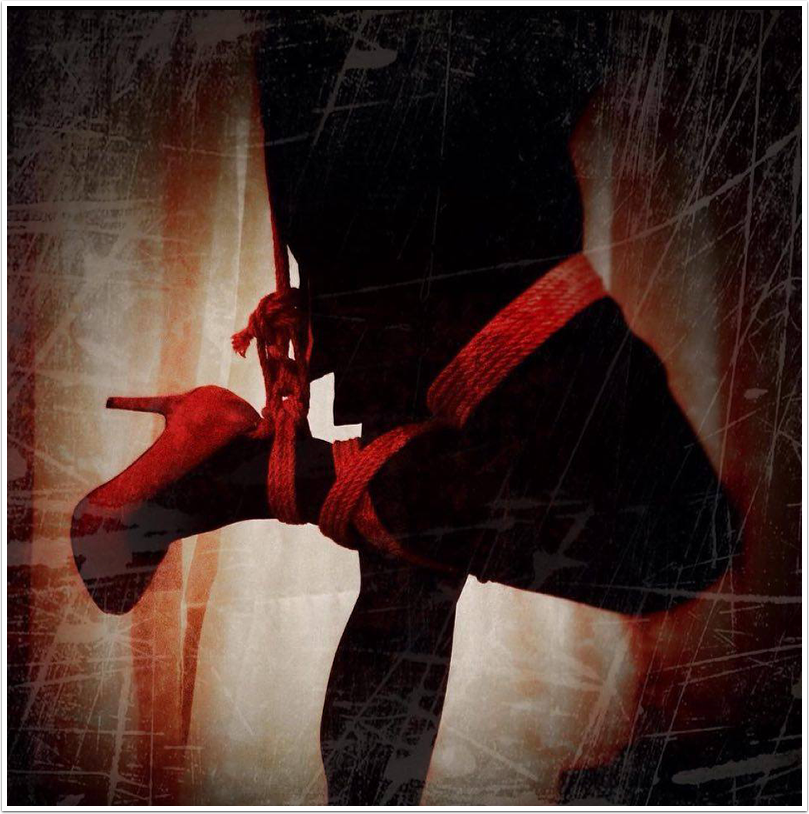
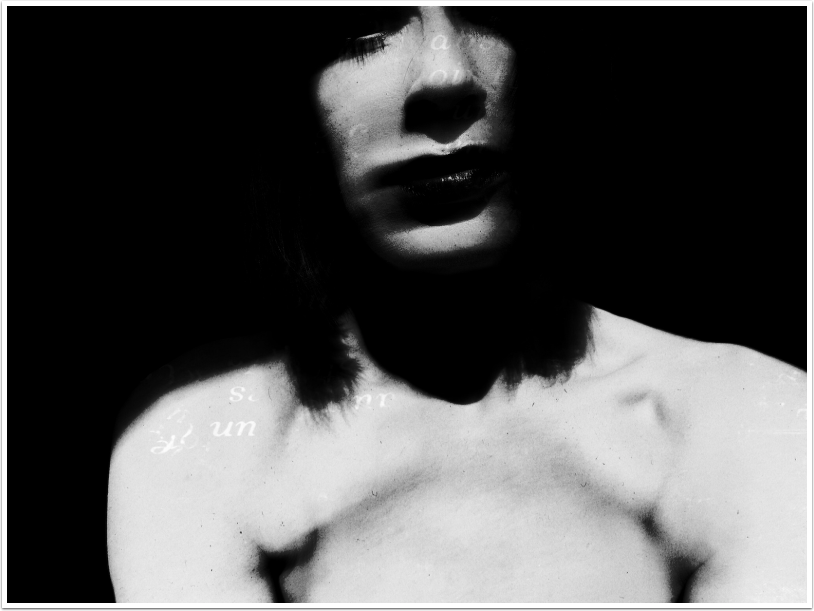
7 Comments
Michelle Robinson
Thank you again Joanne for this opportunity. I have left notifications on in case anyone has questions for me with regards to any of the apps used or about what I’ve written.
Cheers!
Michelle
Stef LP
Well done Michelle .
Really appreciated your closing thoughts.
Very insightful on many levels.
I have never considered u random. Then again…I am no authority on the lack of such.
Very interesting thought about learning more being focused.
Something to consider…indeed.
Brava
Michelle Robinson
Thank you Stef for your comments.
I guess I used to call myself “random” because it always depended on what suited the mood. Perhaps clarification should be used as I used to think my style as ‘random’ simply because of the broad range of styles I enjoy trying out.
I never thought I would say that I would learn more being more focused either. However, in doing so, I think one discovers even more one’s strengths and weaknesses and also the ‘statement’ made in the imagery I feel is bolder. That is how I feel now that I am into this ‘journey’ a bit more!
lee atwell
I really enjoyed reading your story behind your great pics and also your perspective on using apping as art therapy. Wonderful, Michelle!
Michelle Robinson
Thanks so much Lee.
I think ANY form of creativity is good therapy. It is an outlet and a way of focussing our minds on something else. The output via creativity can often be a great way of learning to process one’s own emotions and thoughts, or in my case, just be able to stand back from what it is that is bothering me. I strongly believe that when one is in the fire, one cannot solve anything.
It is with constant wonderment when I think about what is available to us to create. We are no longer limited to the traditional materials. When did art become so portable, so clean and most of all so affordable after the initial outlay? Most of all, I just find it so incredible that given that we all have a mobile phone these days, our outlet for creativity is at our finger tips wherever we go!
Tracy Mitchell Griggs
Thanks for posting your gallery and the thoughts behind the creative process. I am challenged and feel limited by the tiny iPhone screen – hopefully an iPad in my future.
Michelle Robinson
I was certainly challenged by Joanne’s request as I have never had to articulate the emotions and the thought processes!
I envy the people who can still do it on their mobile only. Given I am in my mid-40s and the last year of intensively app-ing on the phone, I was getting migraines constantly … plus the left eye ball being more squint than the right now!
I too hope that you will have an iPad soon. All I can say is that app-ing from the comfort of your home with a wifi means that you don’t need one with 3G and you don’t need one with the largest memory – mine is filled halfway with photo apps and I clear my photo library out constantly.
Thank you!